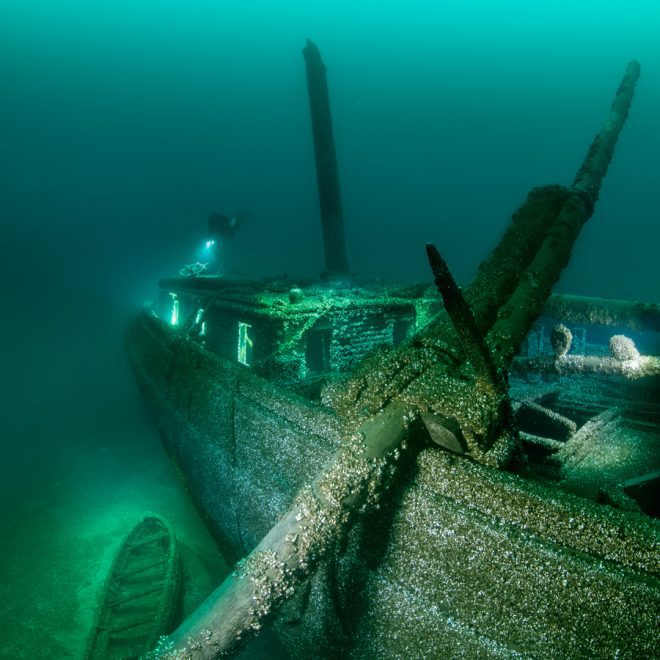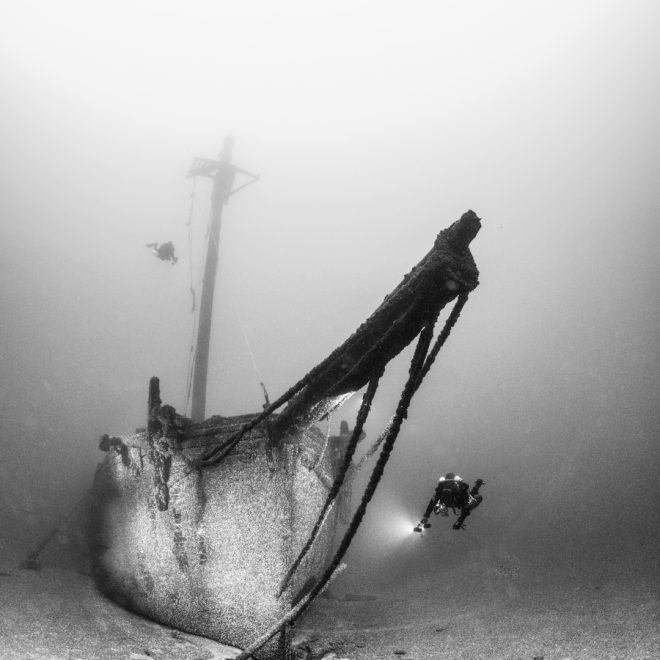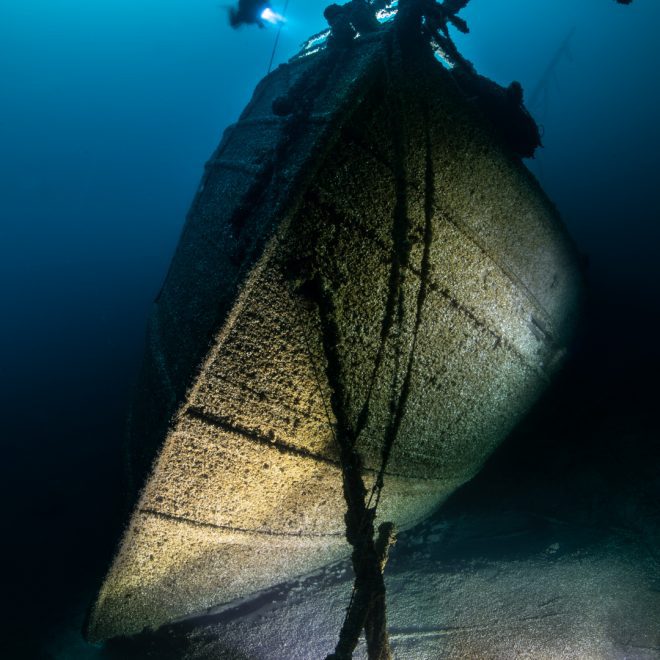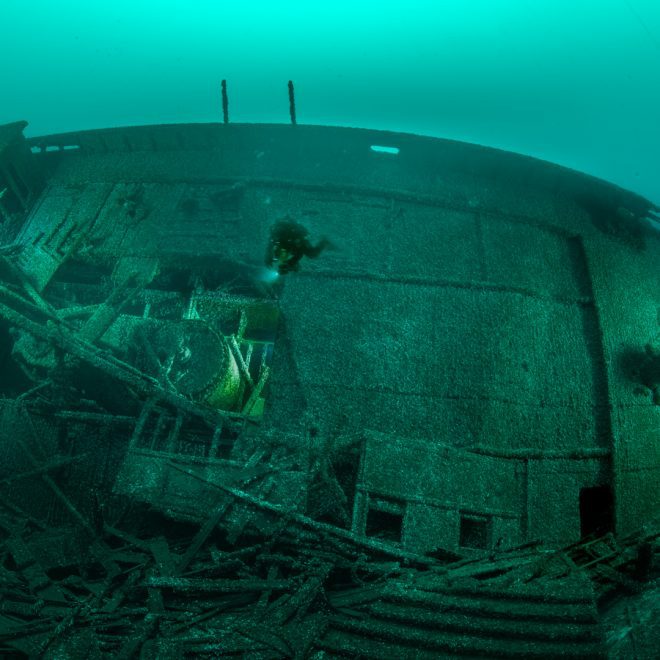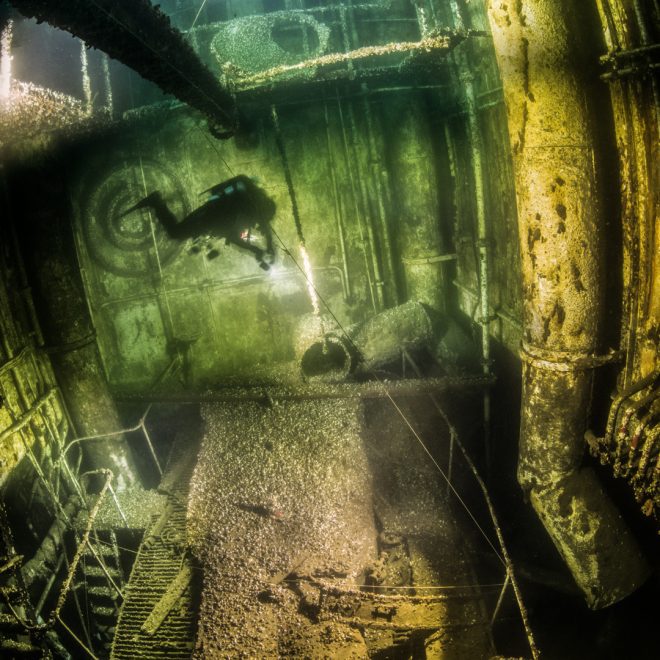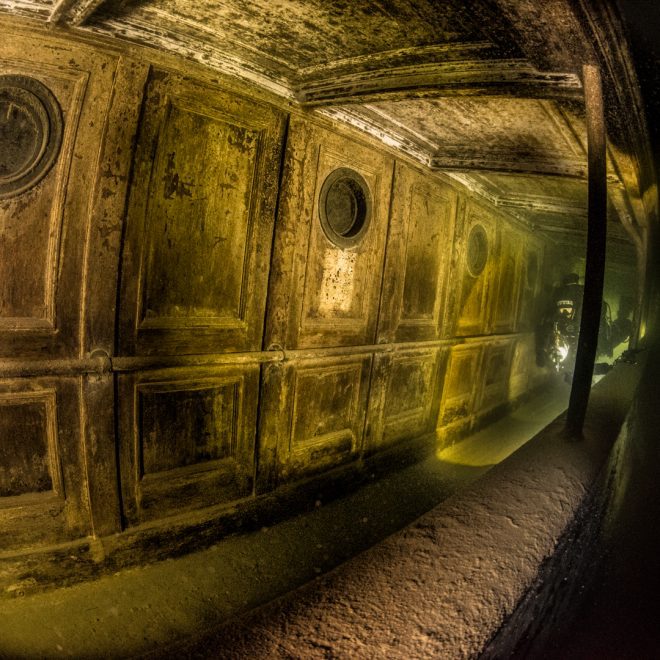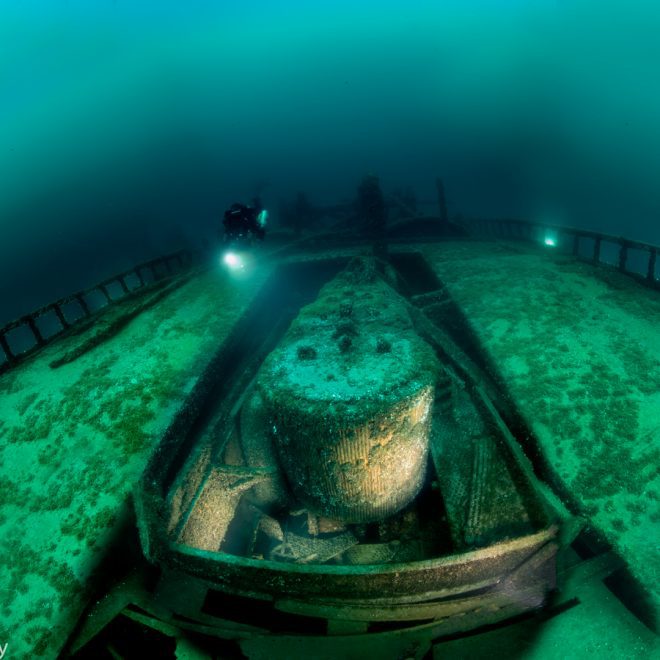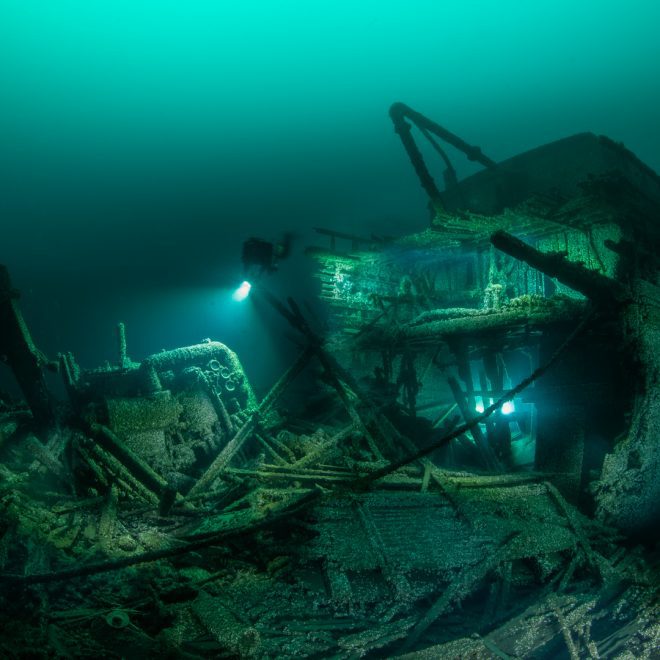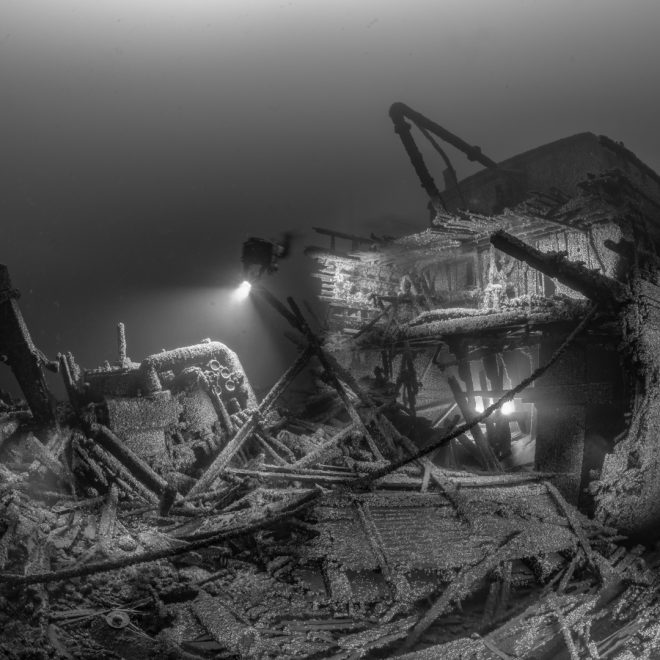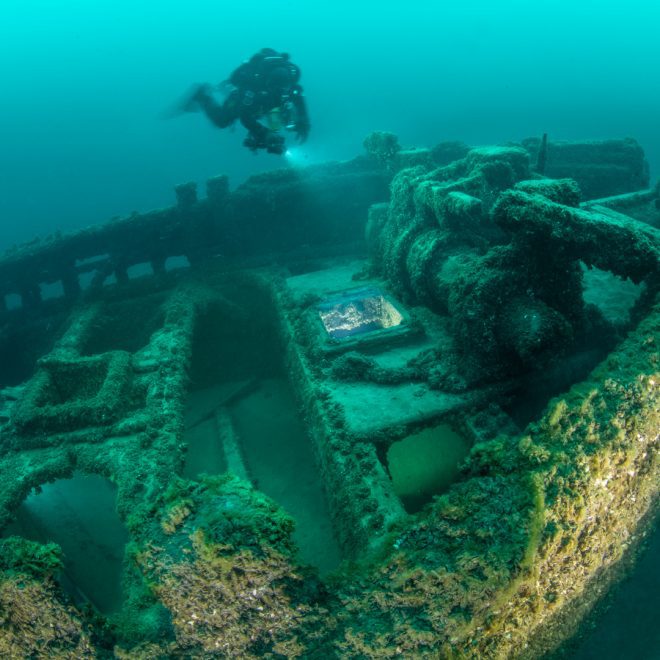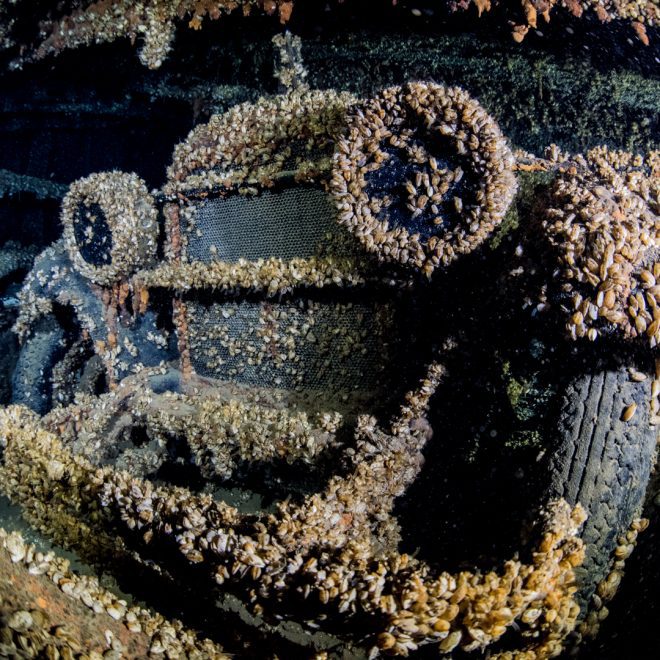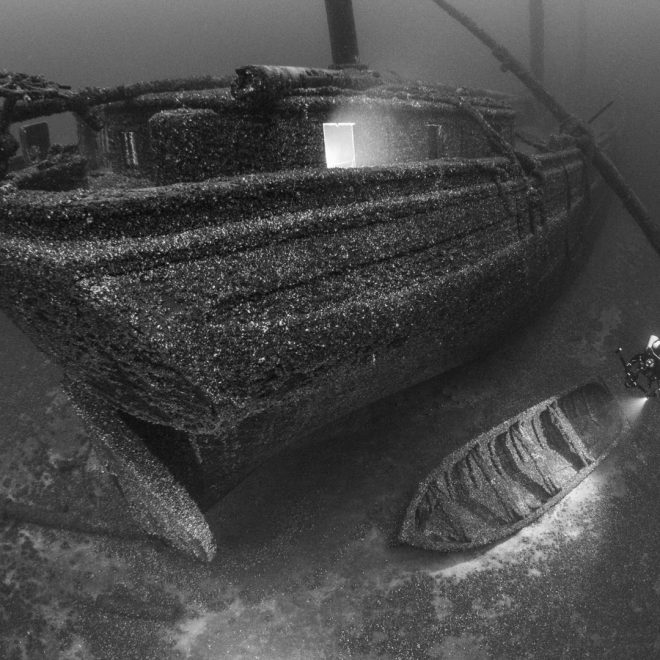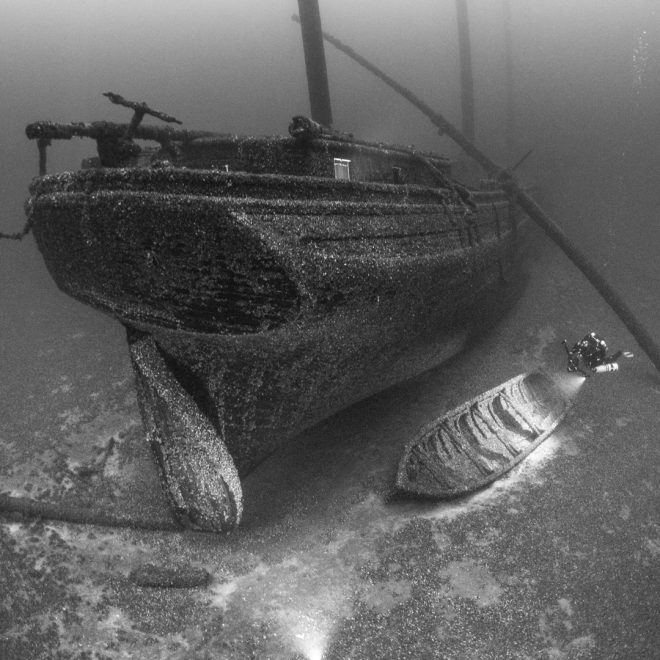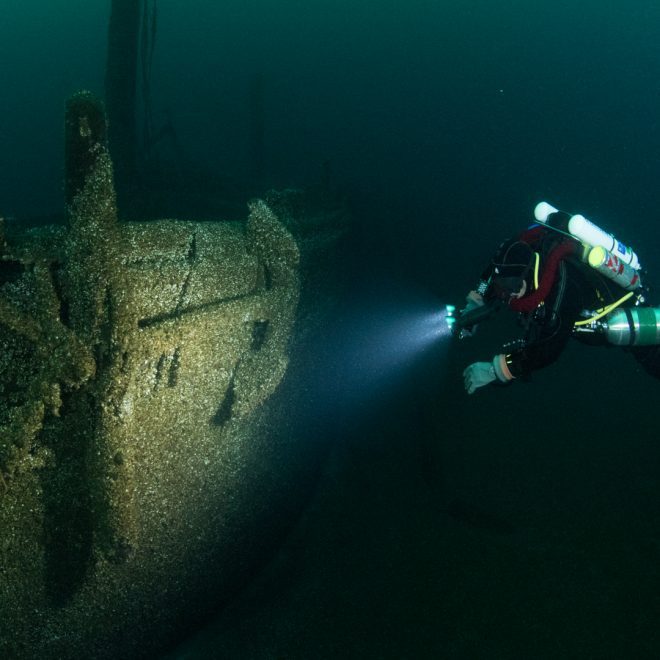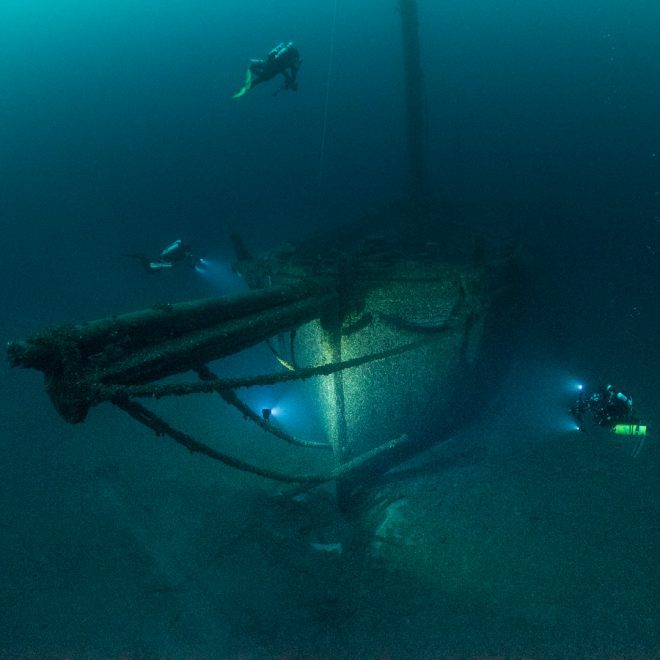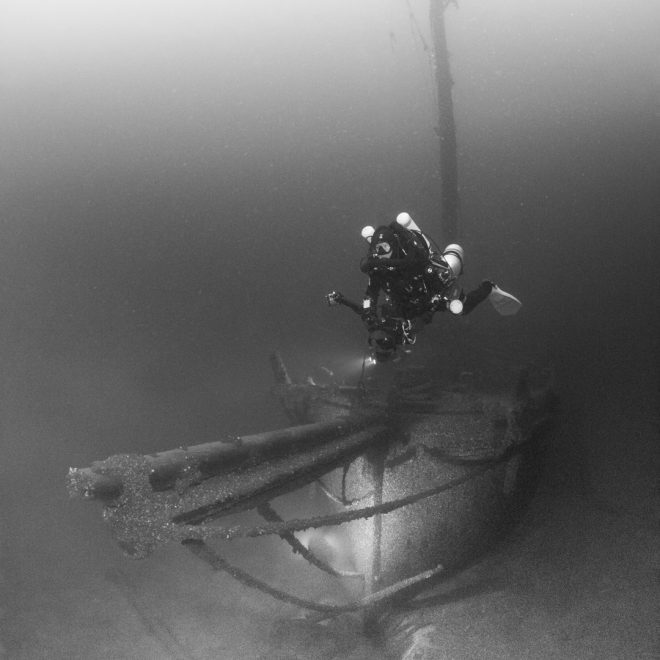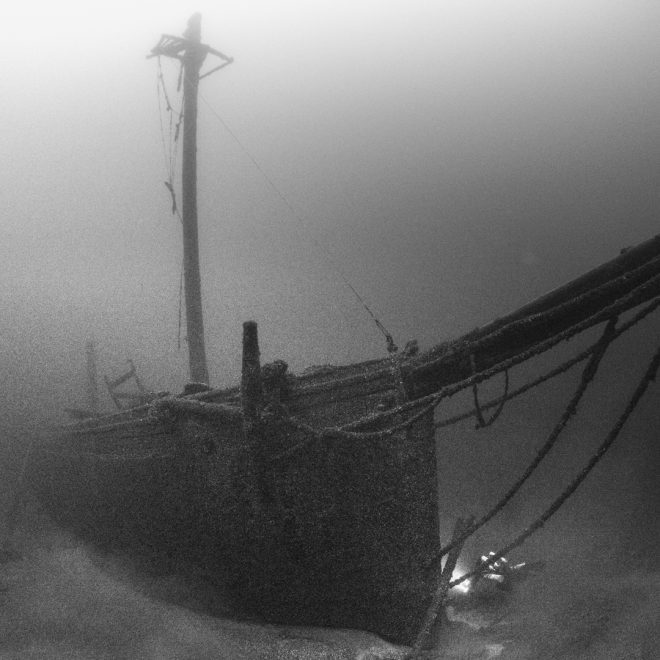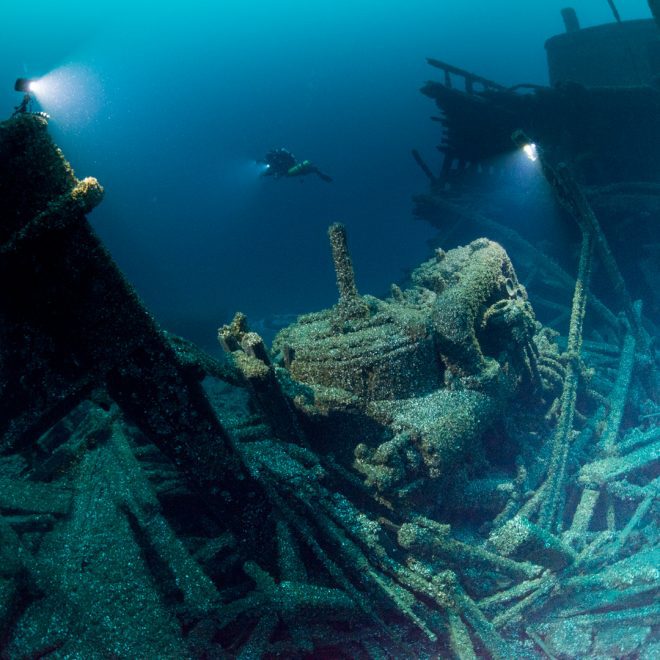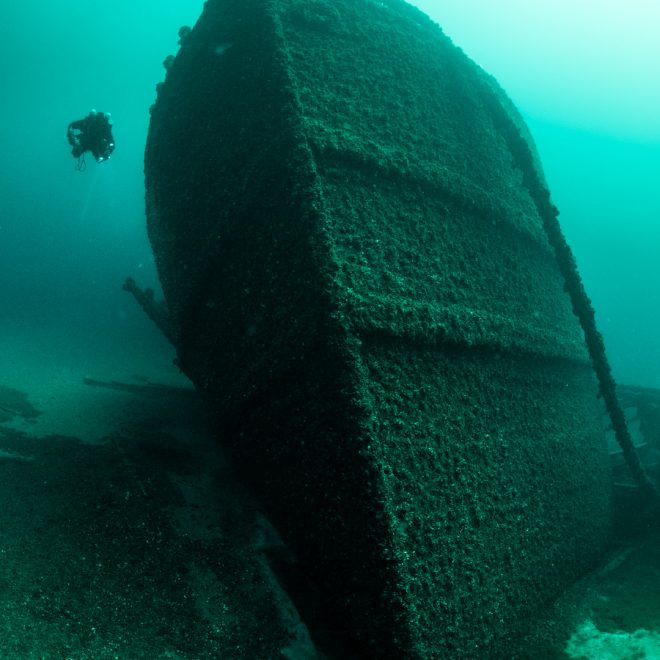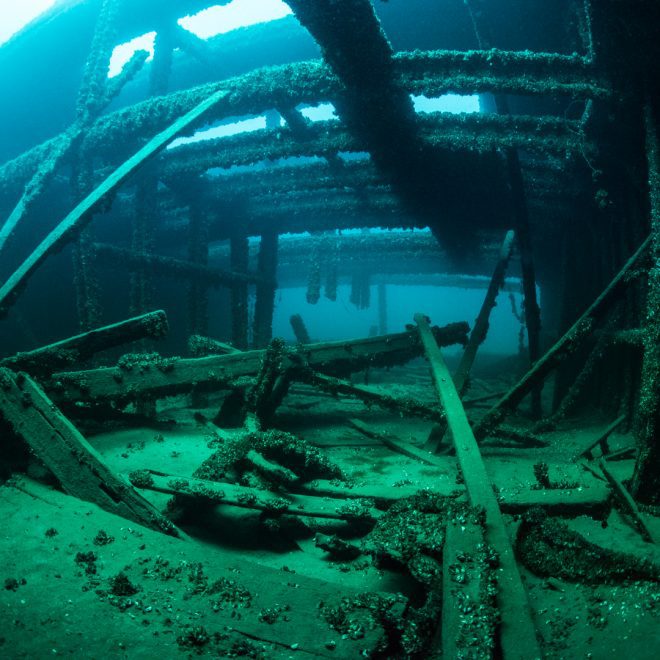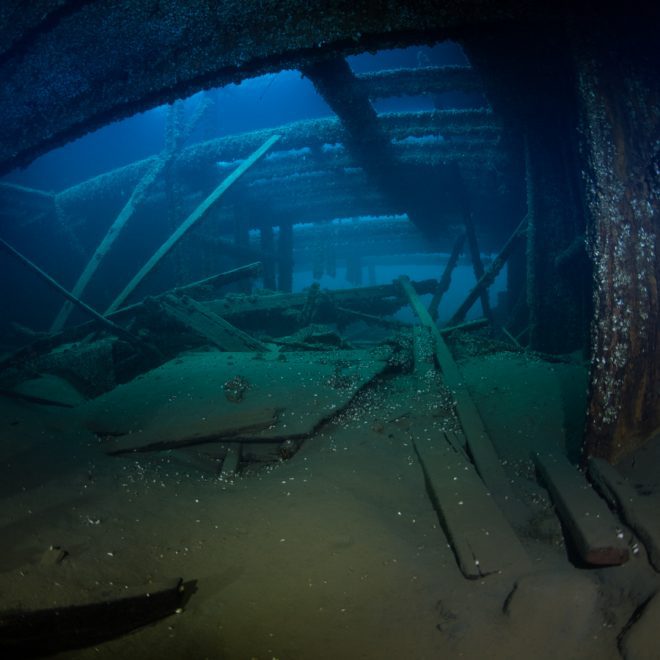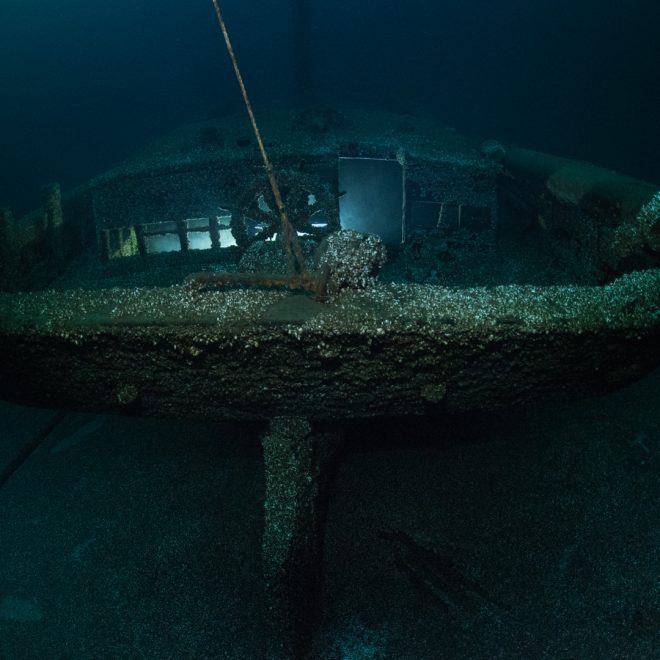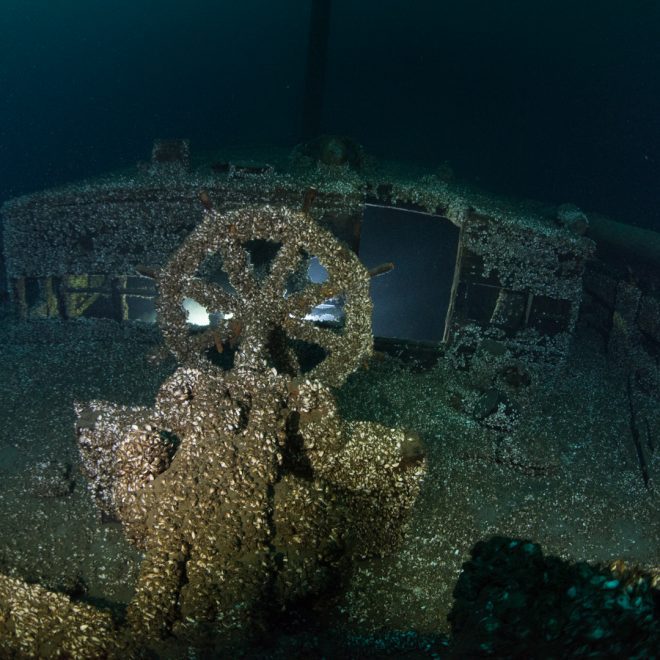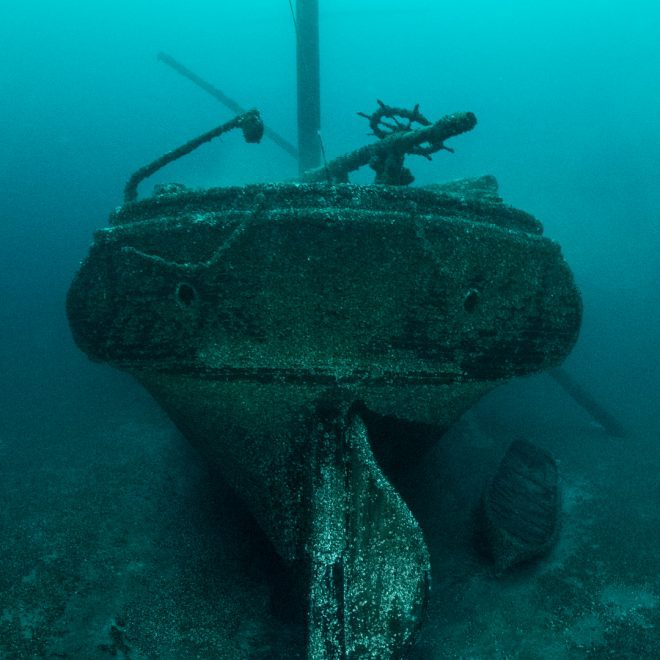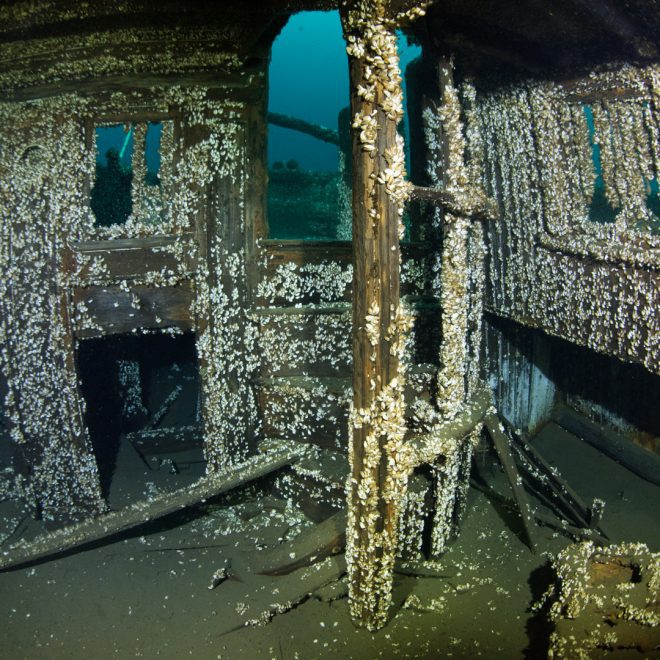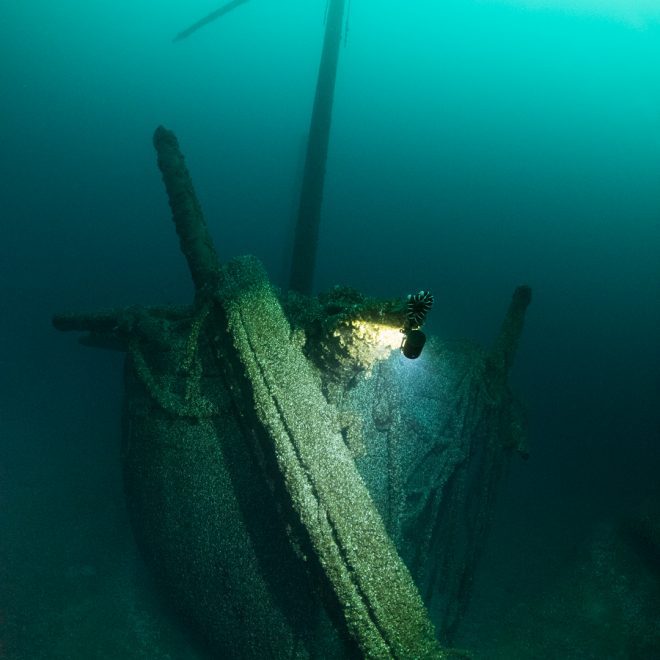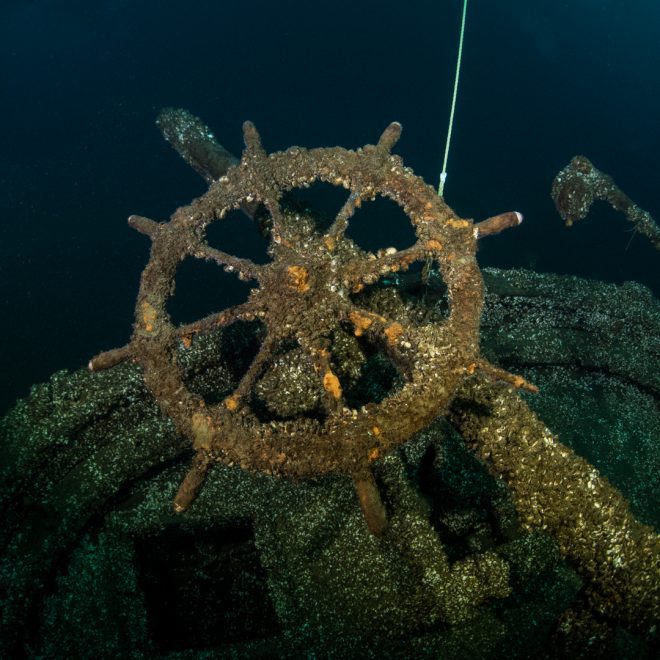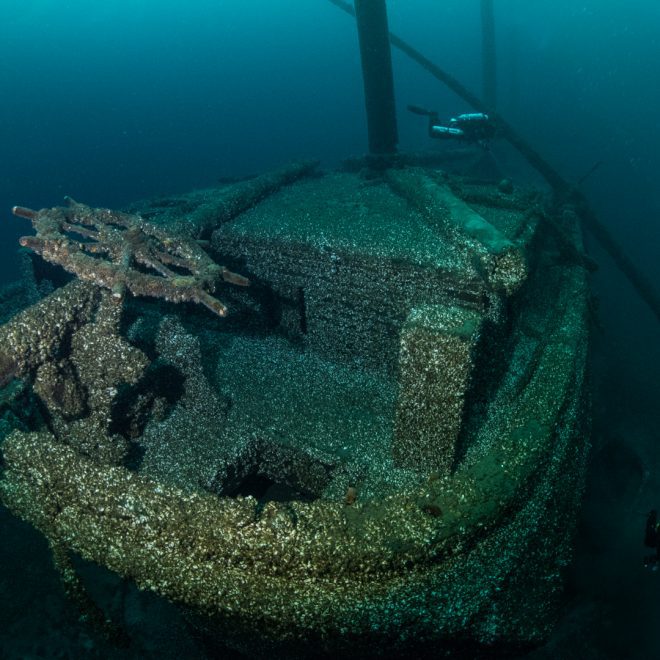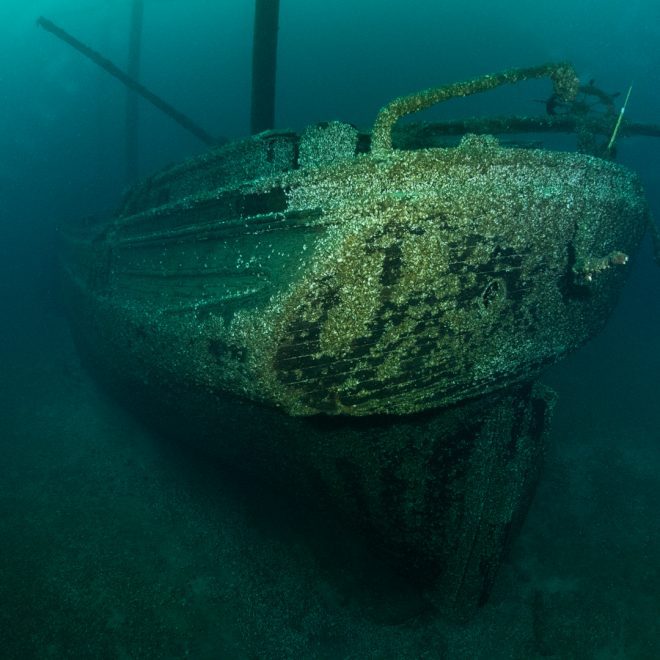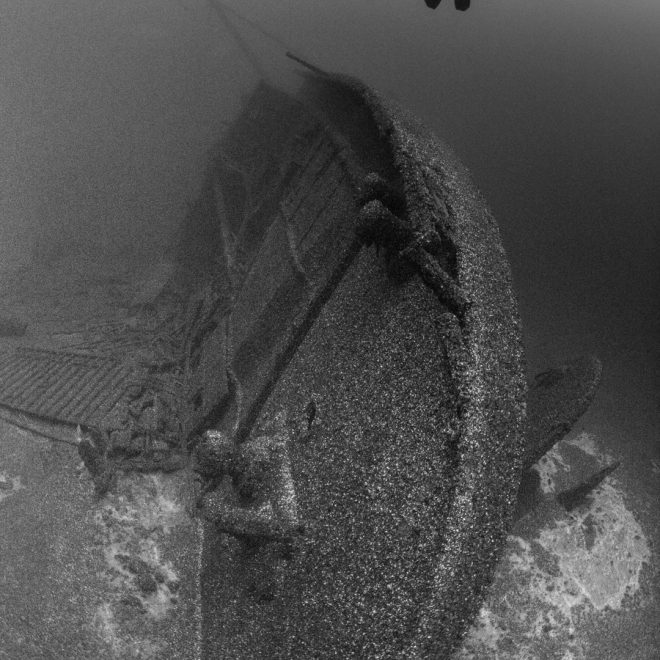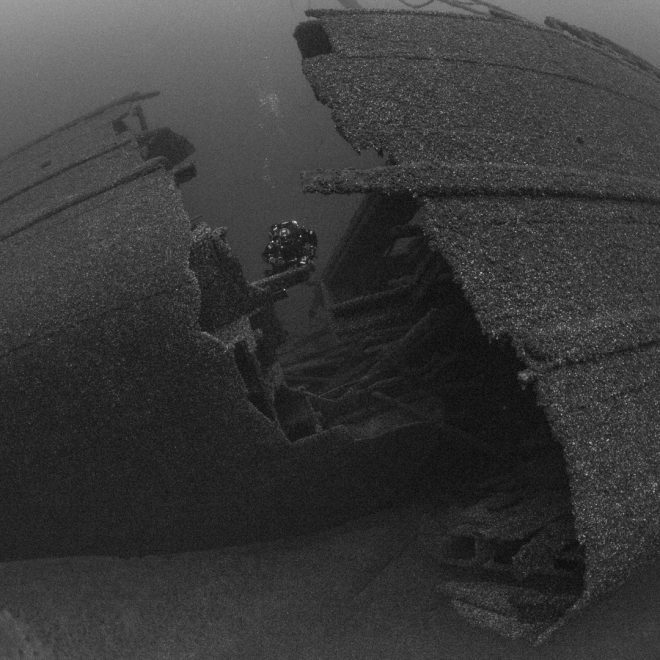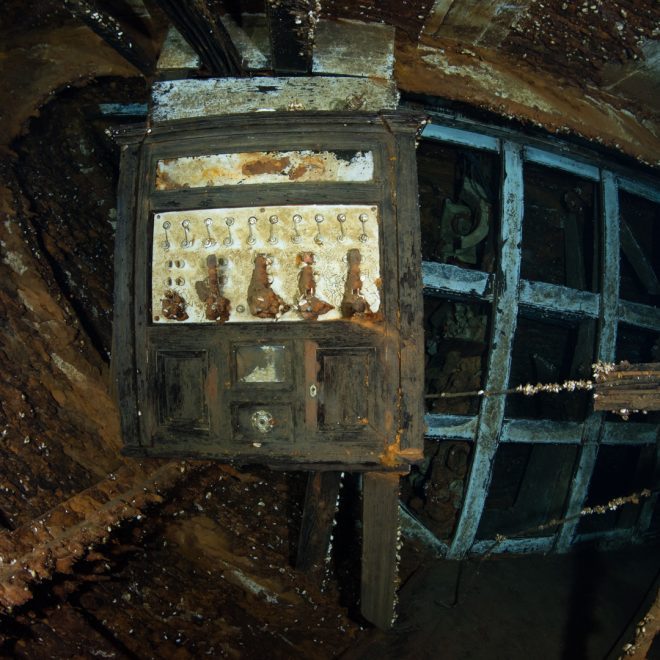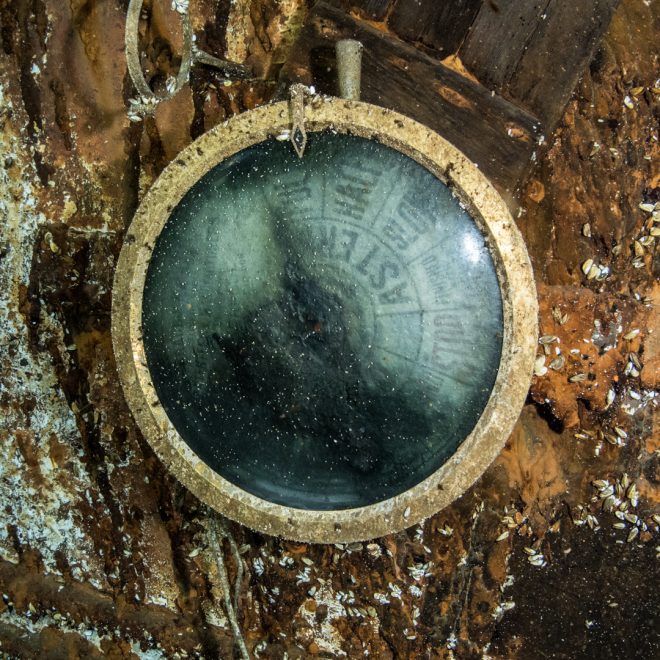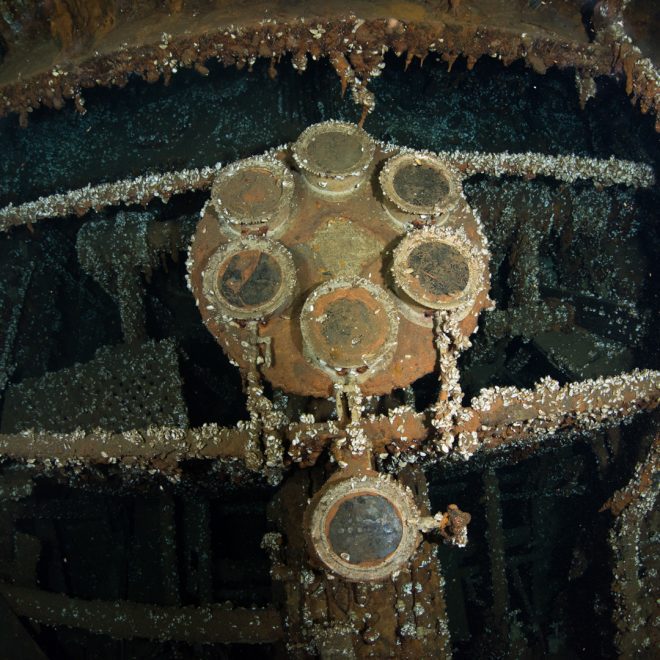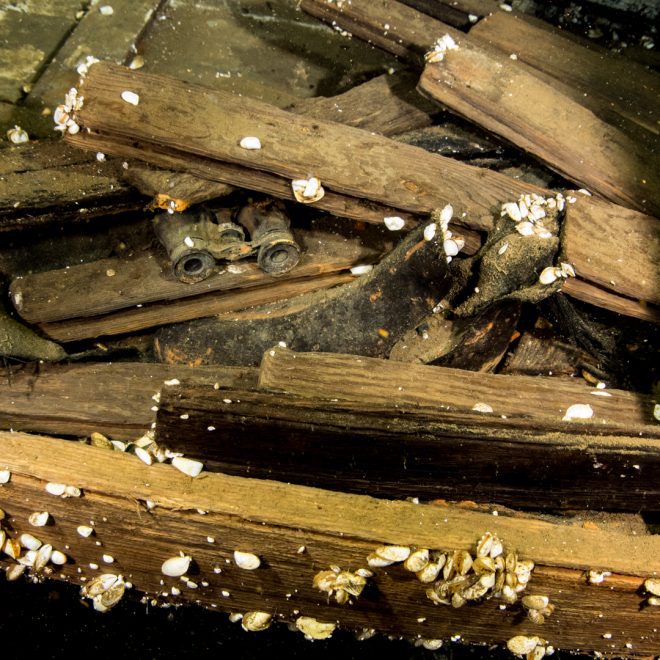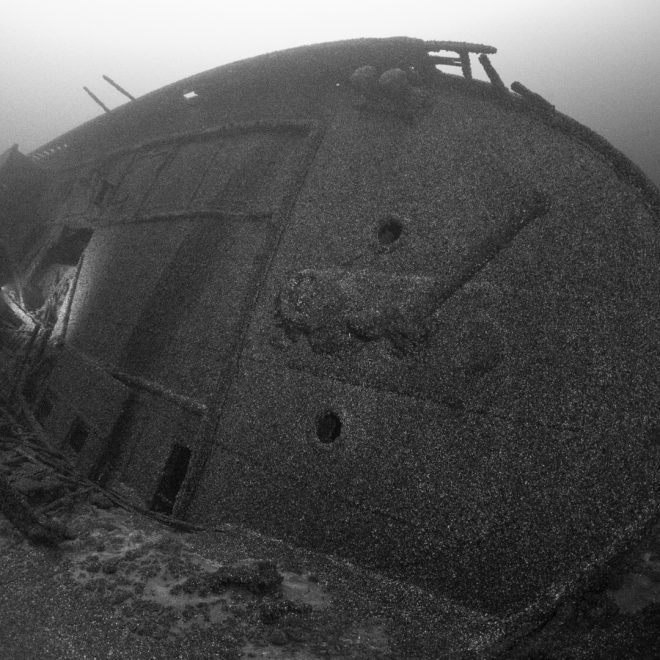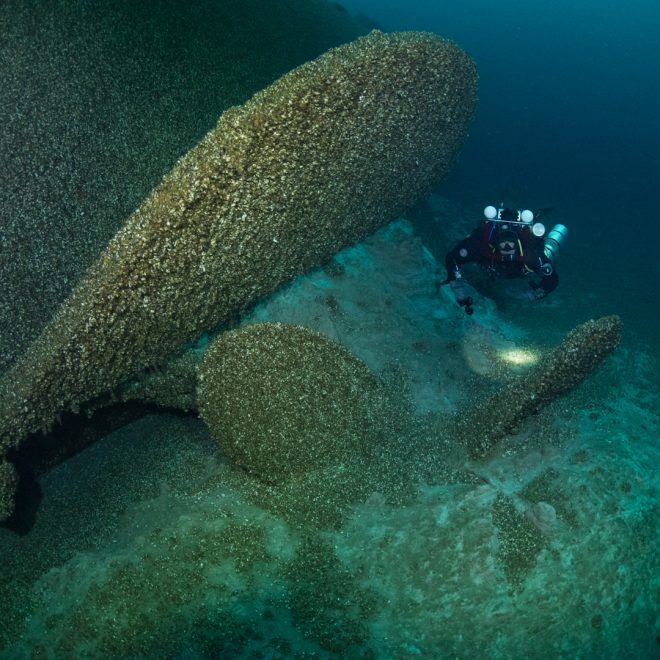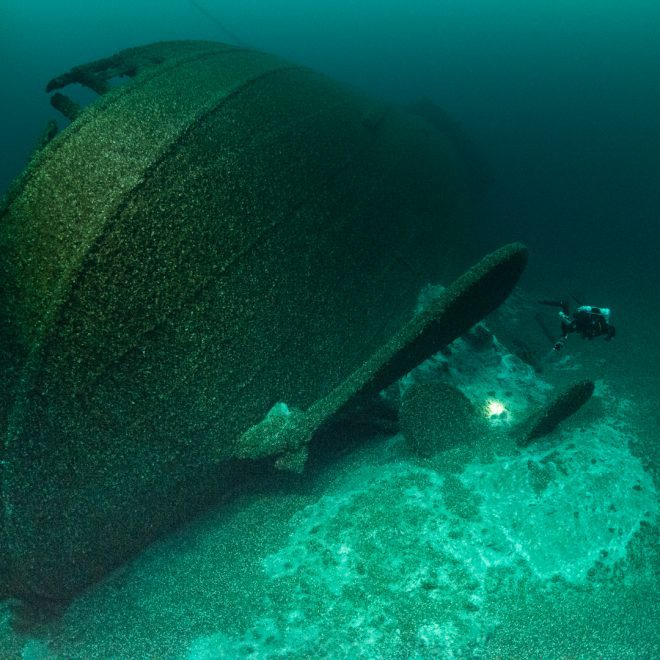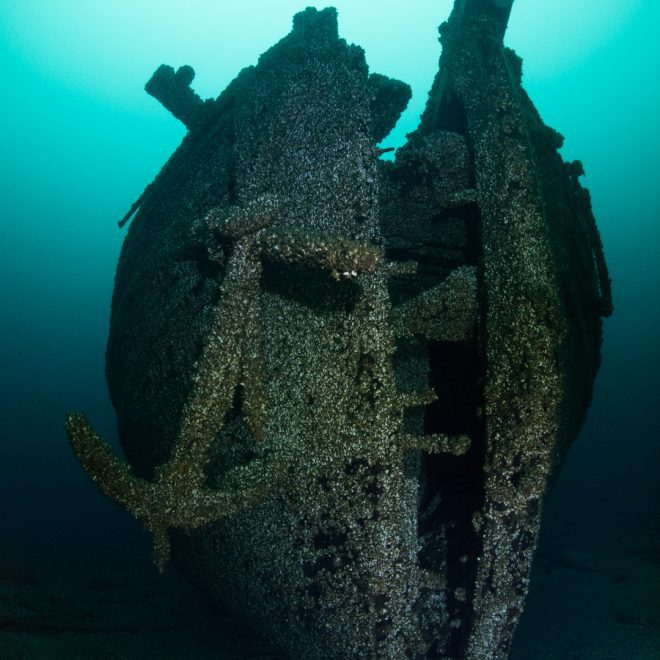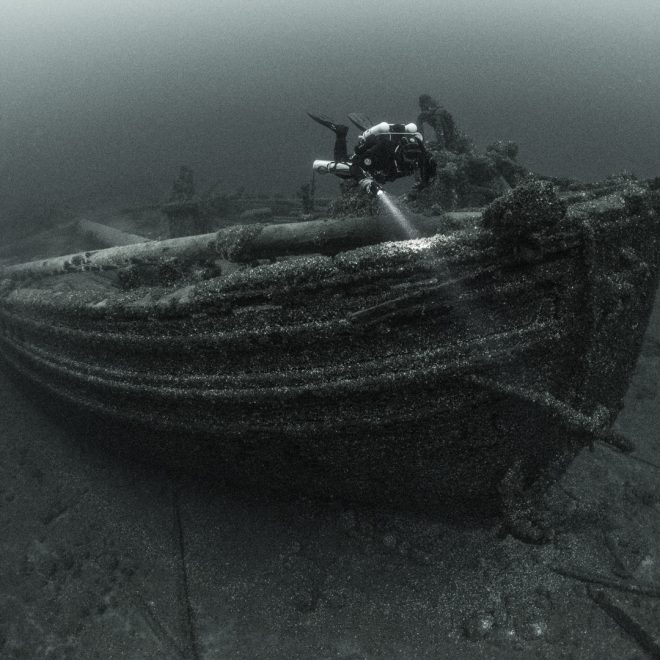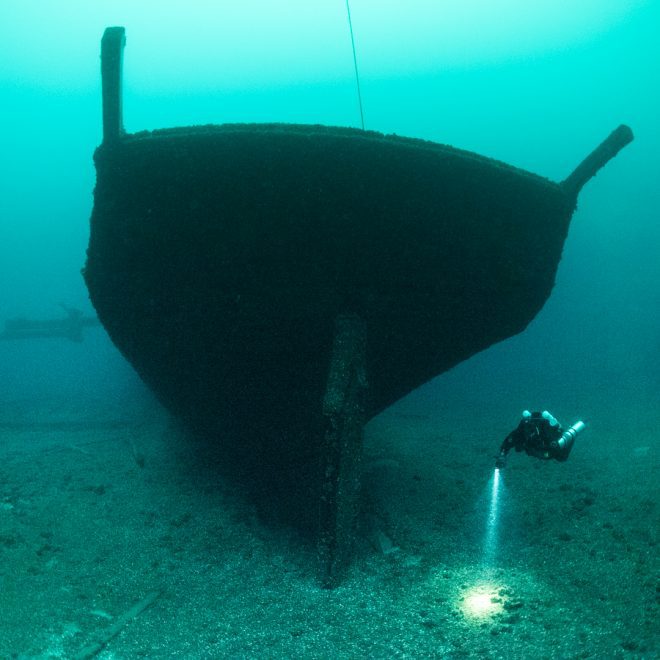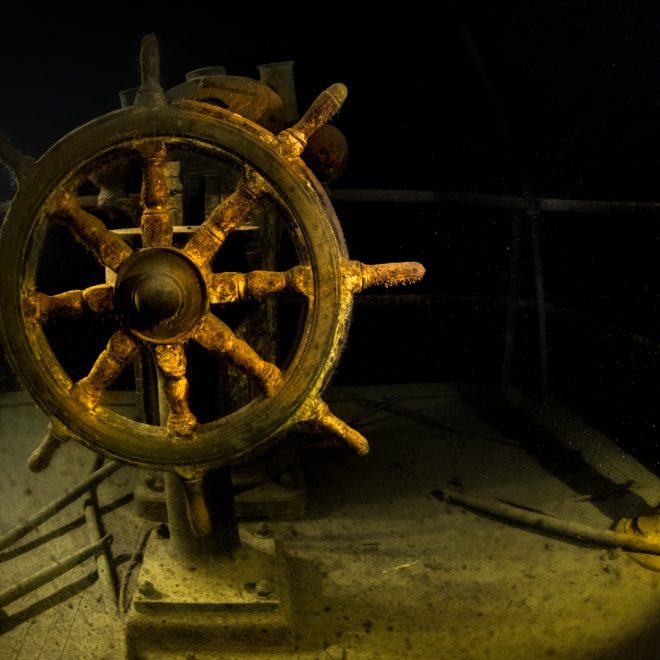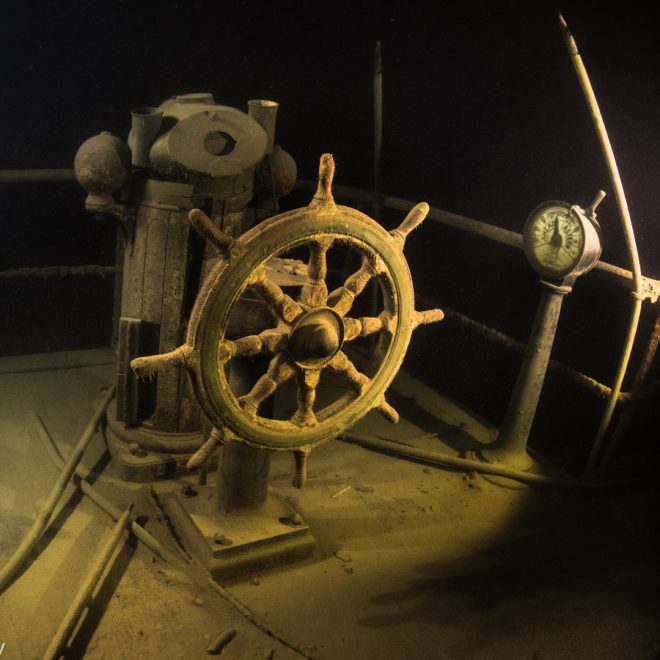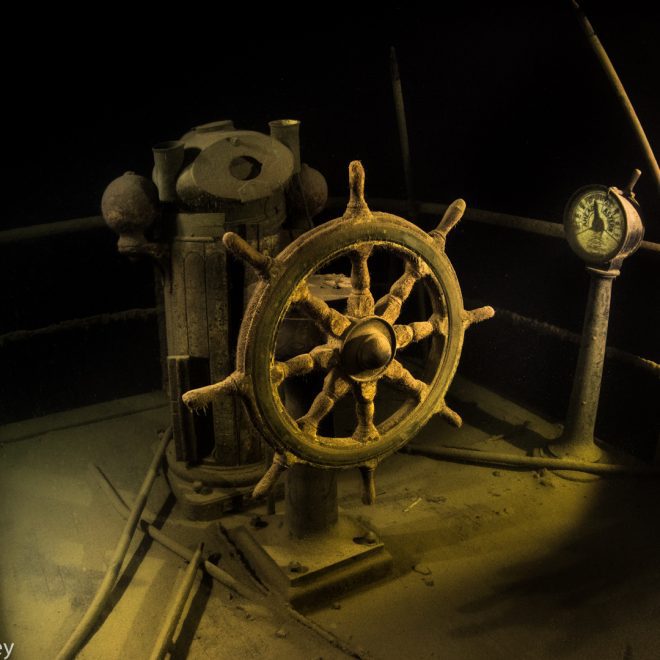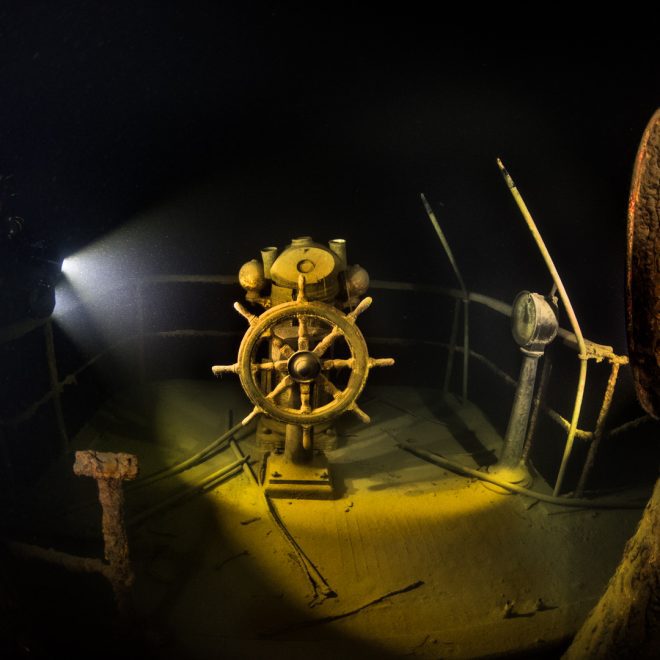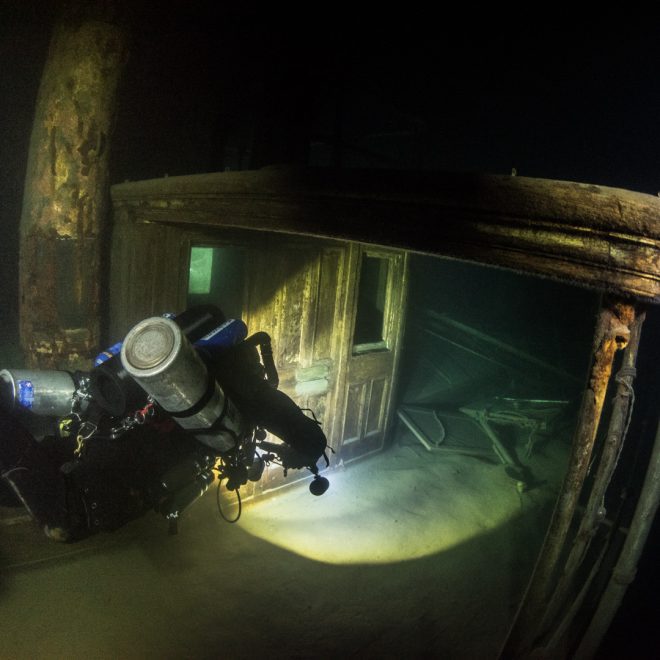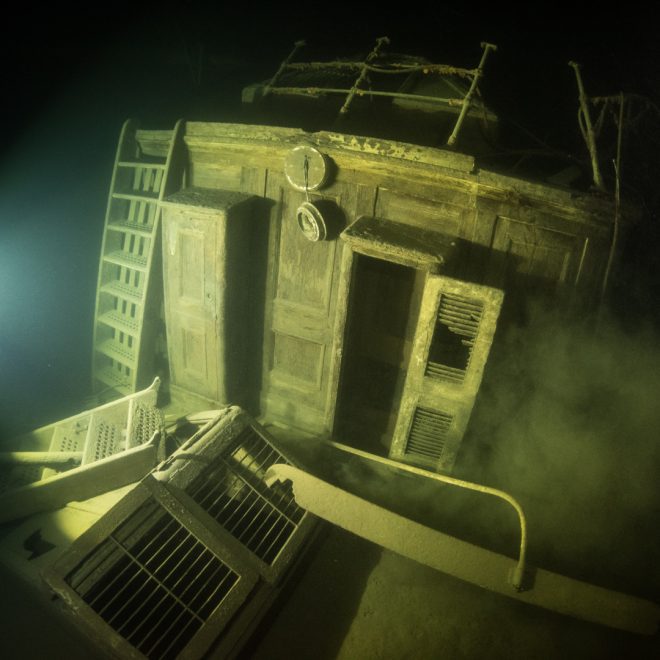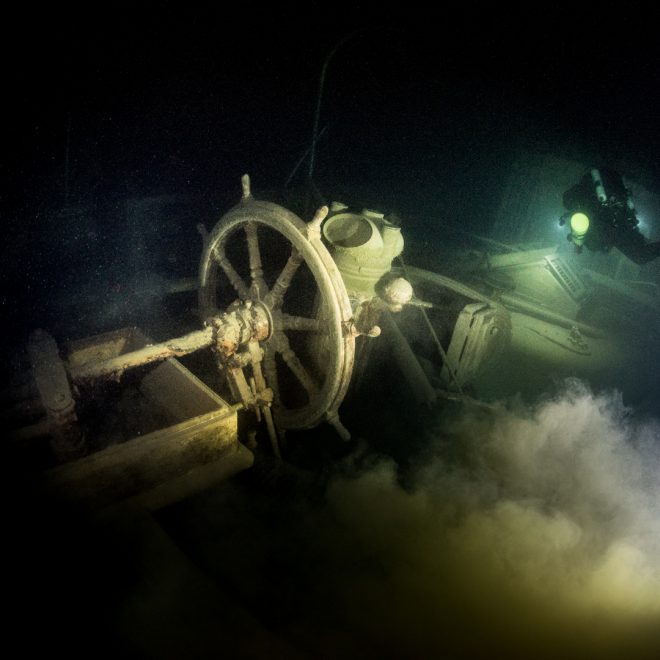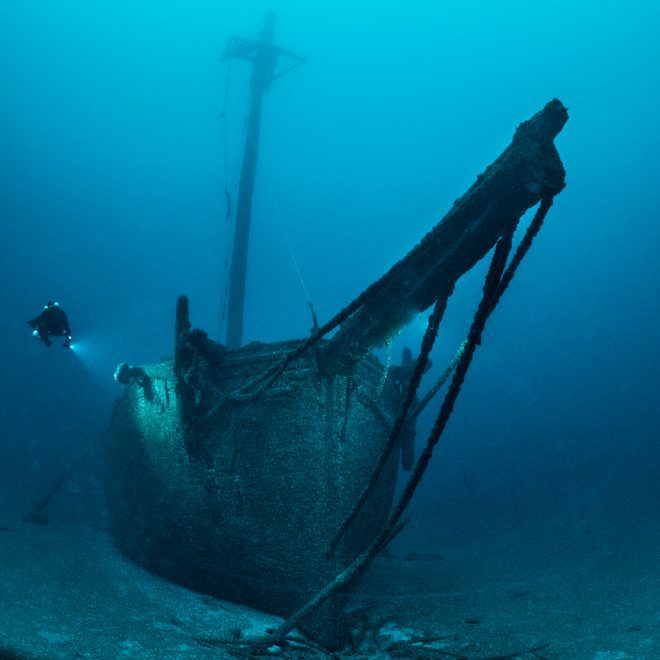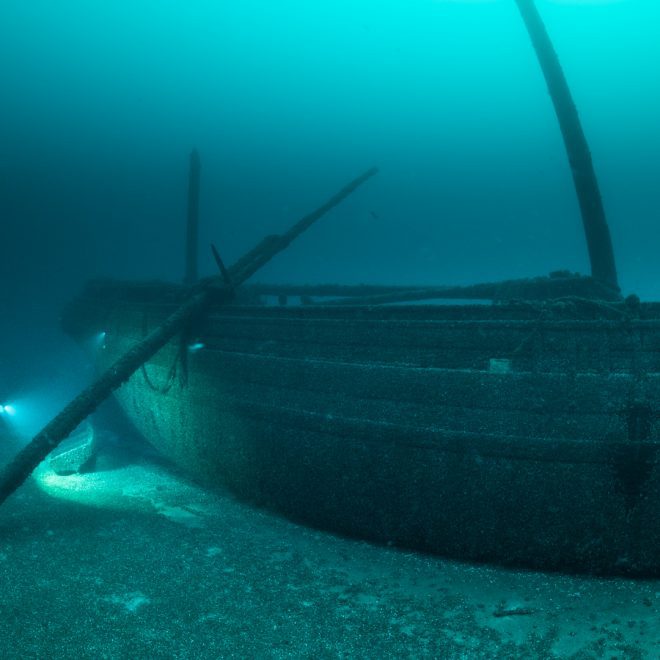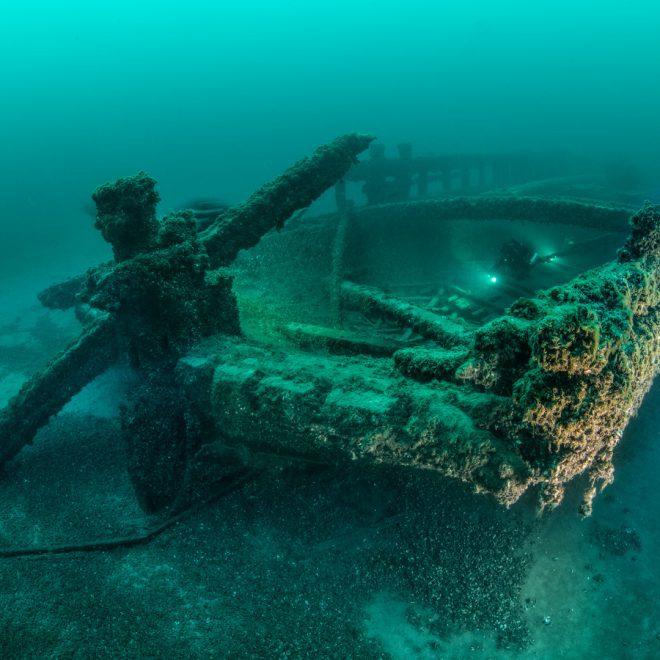Great Lakes: History
History of Great Lakes – An Introduction


The Great Lakes lie between the United States of America and Canada in Mid continental USA. They form the largest bodies of fresh water in the world. Strangely they are all interconnected and form a single drainage system which discharges down the St Lawrence River into the Atlantic Ocean out to the east.
The Great Lakes consist of 5 main lakes, Superior, Michigan, Huron, Erie, and Ontario. They contain 21% of the world’s surface fresh water by volume having a total surface area of 244,106 km2. Lake Superior is the largest and Michigan the second largest bodies of fresh water in the world. What is equally impressive is that there are over six thousand wrecks just waiting to be explored!
The lakes have been a major highway for transportation, migration and trade between settlements in the US and Canada for hundreds of years.
These massive bodies of water are prone to sudden adverse weather conditions. Dense fog promoting collisions, large short swells swamping vessels etc. al contribute to the increase of ship wrecks in the Lakes. It can get pretty nasty pretty quickly. Thousands of vessels have met their fate. So these waters need the respect they deserve.
What makes the Great Lakes so unique is the immaculately preserved wooden sail boats which litter the bottom. What keeps these wrecks in top form is the cold water, depth and lack of any wood eating organisms which are found in the oceans. The introduction of Zebra Mussels, while first discovered in 1988, can be seen as either a blessing or a curse. The Mussels, being filter feeders, have cleaned up the waters extensively making visibility exceptional for divers. While on the other hand all of the wrecks and bottom of the lakes are infested with these small creatures (with the exception of Superior). They are small enough to still show the detail of the wrecks so divers don’t mind the muscles.
Presque Isle and Thunder Bay
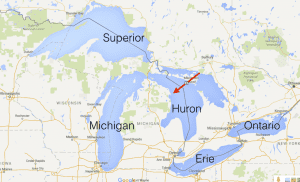

The shipwrecks of Presque Isle and round Thunder Bay are synonymous to the rest of the Great Lakes wrecks. The commercial shipping industry spanning the last two hundred years is well represented by the types of ship wrecks in these waters. The collection reflects transitions in ship architecture and construction, from wooden schooners to early steel-hulled steamers.



